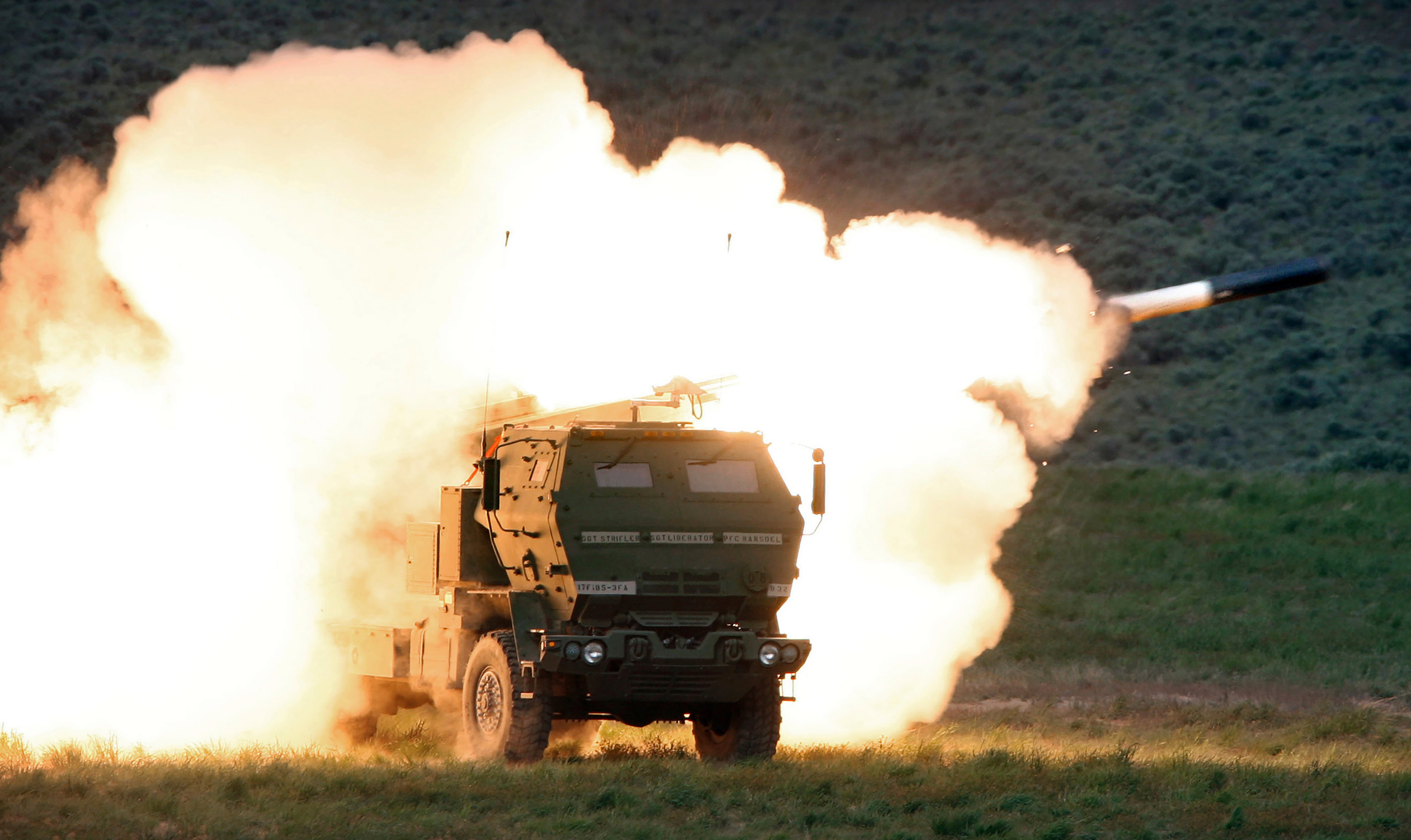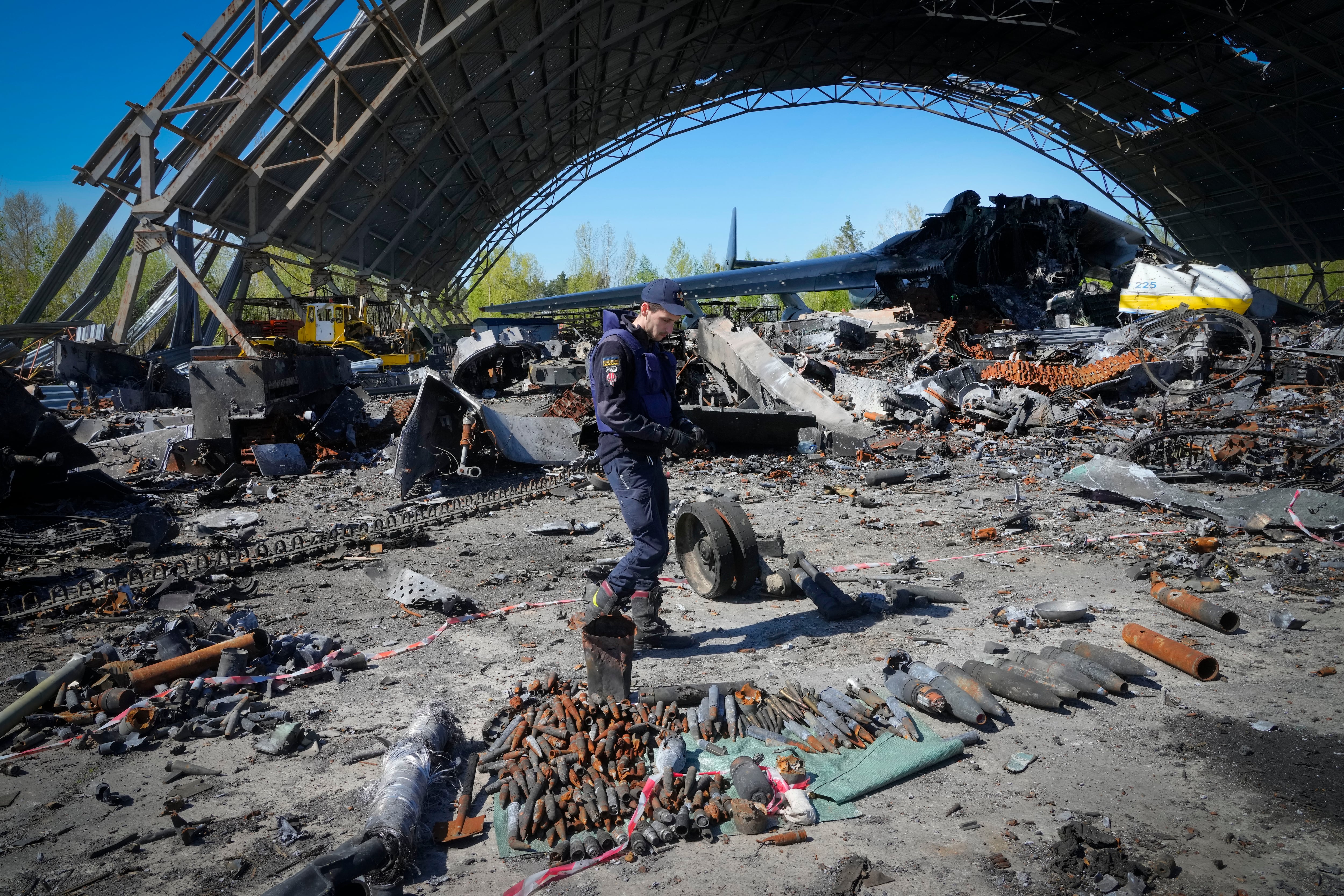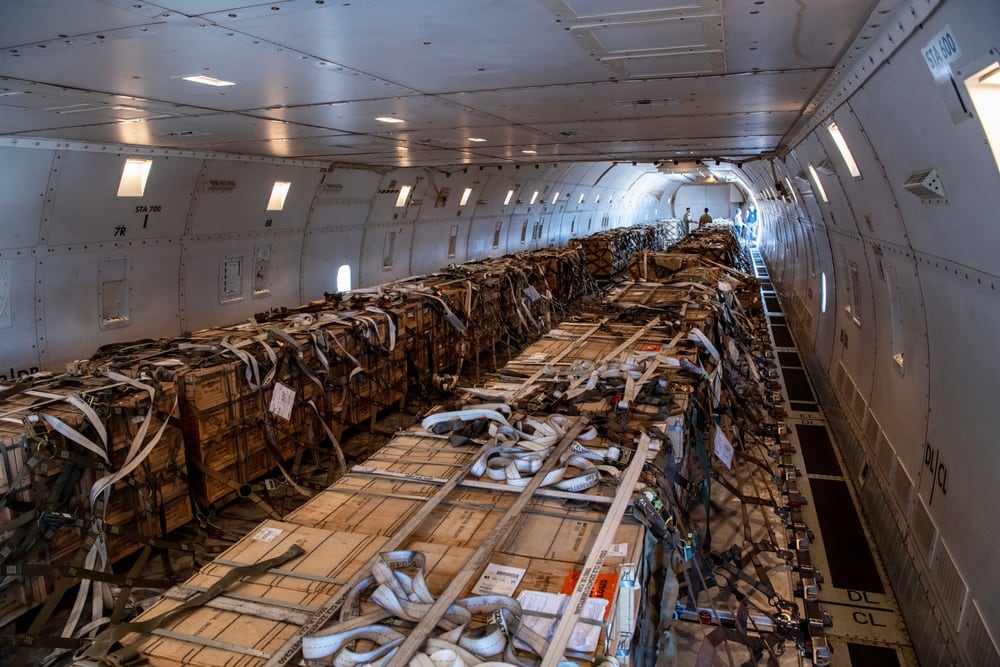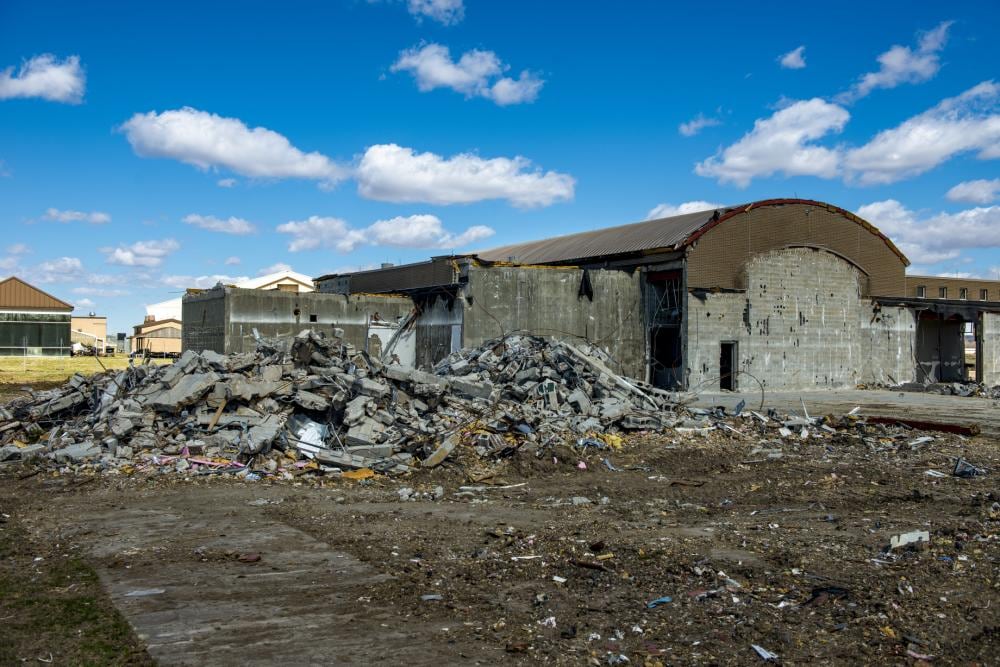This story is part of the portfolio that won the 2023 Society for Professional Journalists Dateline Award for beat reporting in a newsletter or trade publication.
The Pentagon knew something was coming in Ukraine.
Air Force reconnaissance planes had flown over eastern Europe for months, staffed with military linguists who could interpret what nearby Russian forces were discussing as they prepared to invade neighboring Ukraine in February. The U.S. had pledged solidarity with Europe’s second-largest country and approved more than $1 billion in military aid.
There was just one problem.
“We have no Ukrainian-specific linguists. We don’t train Ukrainian,” Staff Sgt. Bobby Brown, airborne language analyst program manager, recently told Air Force Times on a visit to Offutt Air Force Base, Nebraska.
As the situation along Ukraine’s borders — and eventually, inside them — grew more dire, the Air Force rushed to find troops who could pass the Pentagon’s Ukrainian language proficiency test.
Some with family ties to the country already spoke it, while others with an appetite for languages set out to learn. Airmen who study Russian could help out in a pinch as well, since the two share similar alphabets, grammar and vocabulary.
“The Department of the Air Force has the ability to track language capabilities in the military personnel systems and can quickly identify airmen/guardians with the required language skills, to include Ukrainian,” service spokesperson Laura McAndrews said Friday.
The Air Force “surged to meet emerging requirements” for Russian language analysts at the beginning of the conflict, she added.
McAndrews declined to answer how many Ukrainian and Russian linguists are currently supporting U.S. and NATO operations related to the four-month-old war, citing operational security.
RELATED

The Pentagon’s Defense Language Institute trains service members in about a dozen languages, including French, Spanish, Indonesian, Farsi, Russian, Tagalog, Mandarin, Japanese, Korean, Pashto and four Arabic dialects. The most difficult courses can last more than a year.
Those airmen tend to specialize in one of a few key tongues at a time — typically Russian, Mandarin Chinese, Korean and Arabic. But it’s more complicated than knowing how to ask for a bathroom.
Cryptologic language analysts, as they are formally known, intercept the messages and conversations of foreign troops and decision-makers so the U.S. is clued into their possible next steps. That comes in handy for tracking troop movements on the ground in real time as well as longer-term mission planning.
RELATED

“We have our own slang and acronyms and things we talk about that are not conversational language,” said Maj. Eric Armstrong, an RC-135 Rivet Joint pilot who now serves as deputy director of the base reconstruction effort at Offutt Air Force Base, Nebraska, where airborne linguists are first stationed at the 97th Intelligence Squadron.
“They have to understand the mission’s military language … so they can grasp, ‘This type of person is probably talking to this type of person in this role about these things,’” he said.
The intelligence gets routed through organizations like the National Security Agency and shared with countries that work with the U.S. That collaboration has helped Ukrainian troops kill multiple Russian generals and sink a key warship in the Black Sea.
“If it is a threat to our partners, we’re able to tell them that threat,” Armstrong said. “We may not have to give them the whole ‘who, what, why and where,’ but we can tell them that, ‘Hey, there’s something dangerous and watch out.’”
RELATED

Service members who are well-versed in other languages can also help train foreign forces.
For example, Air Force Capt. Jordan Garcia stepped in as an interpreter for Ukrainian students at the Naval Small Craft Instruction and Technical Training School, a U.S. Navy program in Mississippi that trains foreign special operations troops in tactics and strategy, earlier this year.
Garcia, who speaks Ukrainian and Russian, was part of the Air Force’s Language-Enabled Airman Program. The initiative offers online classes for active duty airmen and Space Force guardians to gain a working knowledge of a foreign language.
“It was critical to hit the ground running, so there was not a lot of time to get spun up on the technical terminology related to the subjects,” he said in a May 12 release. “My development through LEAP training and eMentor courses helped me be able to adapt and learn at the speed I needed to.”
Garcia spent three weeks with the Ukrainians as they progressed through courses on patrol craft, diesel systems maintenance and international tactical communications. The students were in Mississippi when Russian forces invaded their home country on Feb. 24.
“One of the Ukrainian students was originally working as an interpreter for the other students,” Garcia said. “After shadowing her for a day, I stepped in and did the interpreting for all of the Ukrainian students so she could focus on learning the material.”
RELATED

In many cases, getting someone up to speed to decipher military chatter in a foreign language — heard over a crackly headset, during a crisis, with little backup — requires squeezing what is typically an 18-month process into a matter of weeks.
The U.S. military dealt with that time crunch firsthand while withdrawing from its two-decade war in Afghanistan last summer.
As of May 2021, the Air Force had just eight linguists who spoke Pashto, one of Afghanistan’s two official languages that is spoken by about half of the population, said Armstrong, who helped manage the withdrawal as an operations director at Al Udeid Air Base, Qatar, before moving to Offutt.
“That was an absolute nightmare. Between [RC-135 Rivet Joints and EC-130H Compass Calls], we split them up the best we could,” Armstrong told Air Force Times in April. “We brought some folks back who had already gone to other languages, but hadn’t quite become unqualified yet.”
That included two Chinese experts who had previously studied Pashto.
“Trying to spin them up in order to safely get through the Afghanistan withdrawal was challenging,” Armstrong said.
RELATED

That grew from eight people to about 130 airmen who offered language support during the massive U.S.-led humanitarian evacuation and the domestic resettlement effort, McAndrews said. Those airmen acted as advocates for Afghan evacuees as they tried to piece together a path forward with the U.S. military, federal agencies and nongovernmental organizations.
“For Operation Allies Refuge/Operation Allies Welcome, the linguist teams at the camps were a critical asset. With language and culture expertise, they were injected into every role at every step of the process without any formal training for this type of mission,” McAndrews said.
Despite a constant need for foreign language proficiency in its ranks, the Air Force hasn’t found a way to avoid the last-minute scramble for multilingual airmen in an emergency.
Part of the problem is that the service has to reserve spots at the Defense Language Institute five years in advance. The Army is in charge of training cryptologic language analysts there.
“We have to basically plan for the world’s messes, crises, five years out — can’t really do that. It’s constantly a struggle,” said Brown, who specializes in Chinese.
RELATED

He noted that the military has tried ways of quickly retasking its linguists as needed, but it hasn’t gone well.
“They try to, as best as possible, keep everyone going and keep everyone relevant,” Brown said.
McAndrews said the Air Force has started a pilot program, dubbed “Linguist Next,” at the institute in an attempt to fast-track language expertise. The service hopes that more frequent proficiency tests will make that knowledge stick more quickly than in DLI’s usual course.
Contractors also help retrain linguists who need to brush up on a new language, stat, she said.
The military wants additional, more stable funding for its various foreign language education programs for a more stable bench of polyglots. For now, the Air Force is prioritizing languages that fall in line with the National Defense Strategy.
That document positions the United States in military competition with China and Russia, with a lesser emphasis on countering North Korea, Iran and violent insurgencies around the world.
“Language equities across the Air Force are in high demand and are a significant and costly resource to create and maintain,” McAndrews said. “The Air Force works closely with the Department of Defense through a multitude of working groups to strike the right balance of capability to meet the needs of our nation and the service.”
Rachel Cohen is the editor of Air Force Times. She joined the publication as its senior reporter in March 2021. Her work has appeared in the Washington Post, the Frederick News-Post (Md.), Air and Space Forces Magazine, Inside Defense, Inside Health Policy and elsewhere.




